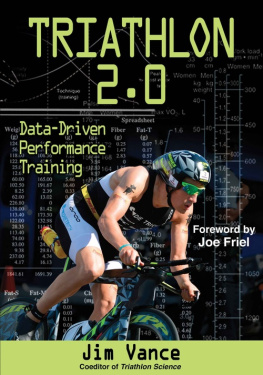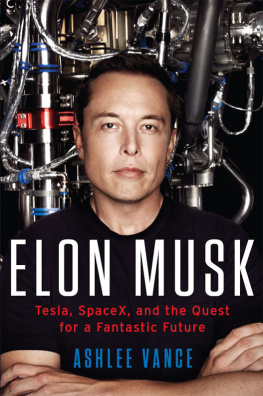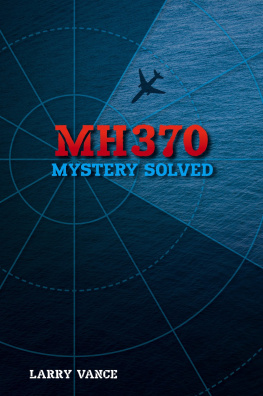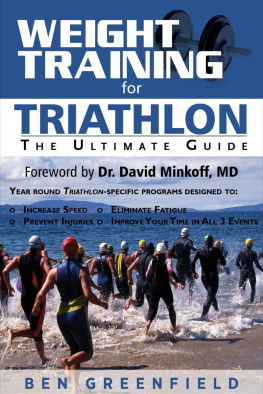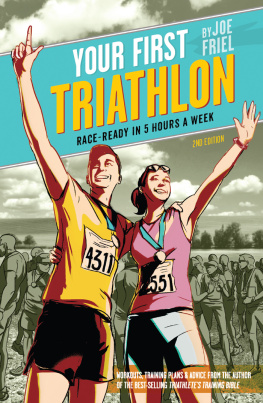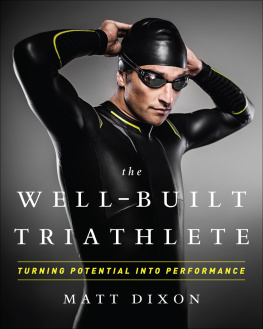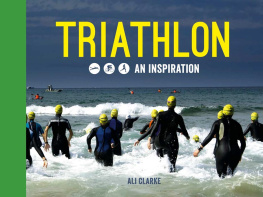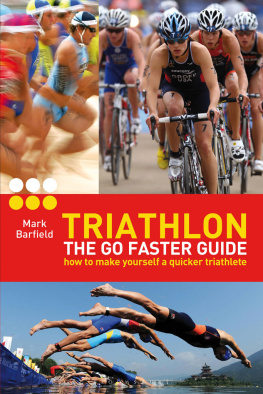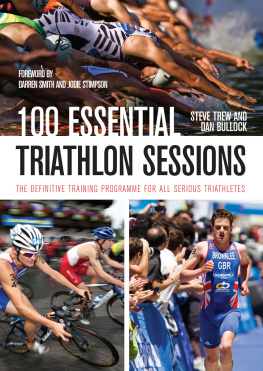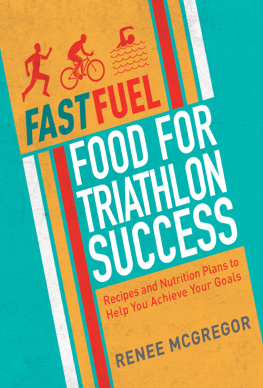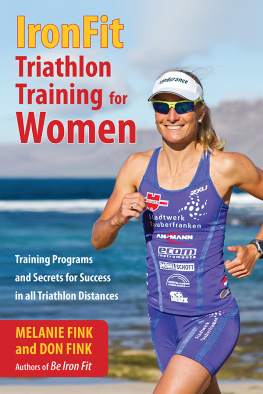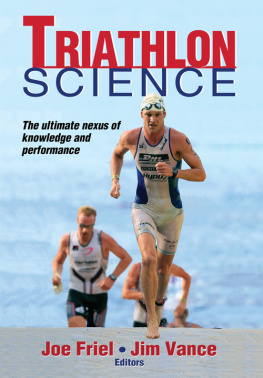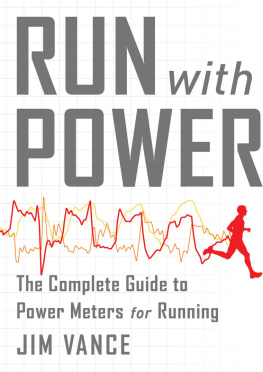Vance - Triathlon 2.0: data-driven performance training
Here you can read online Vance - Triathlon 2.0: data-driven performance training full text of the book (entire story) in english for free. Download pdf and epub, get meaning, cover and reviews about this ebook. City: Champaign;IL, year: 2016, publisher: Human Kinetics, genre: Children. Description of the work, (preface) as well as reviews are available. Best literature library LitArk.com created for fans of good reading and offers a wide selection of genres:
Romance novel
Science fiction
Adventure
Detective
Science
History
Home and family
Prose
Art
Politics
Computer
Non-fiction
Religion
Business
Children
Humor
Choose a favorite category and find really read worthwhile books. Enjoy immersion in the world of imagination, feel the emotions of the characters or learn something new for yourself, make an fascinating discovery.
Triathlon 2.0: data-driven performance training: summary, description and annotation
We offer to read an annotation, description, summary or preface (depends on what the author of the book "Triathlon 2.0: data-driven performance training" wrote himself). If you haven't found the necessary information about the book — write in the comments, we will try to find it.
Achieve your best finish ever when you train by the numbers with former elite triathlete Jim Vance. Triathlon 2.0 shows you how to interpret data from power meters, GPS systems, heart rate monitors, and swim workouts to achieve new goals and optimize performance.
Vance: author's other books
Who wrote Triathlon 2.0: data-driven performance training? Find out the surname, the name of the author of the book and a list of all author's works by series.
Triathlon 2.0: data-driven performance training — read online for free the complete book (whole text) full work
Below is the text of the book, divided by pages. System saving the place of the last page read, allows you to conveniently read the book "Triathlon 2.0: data-driven performance training" online for free, without having to search again every time where you left off. Put a bookmark, and you can go to the page where you finished reading at any time.
Font size:
Interval:
Bookmark:
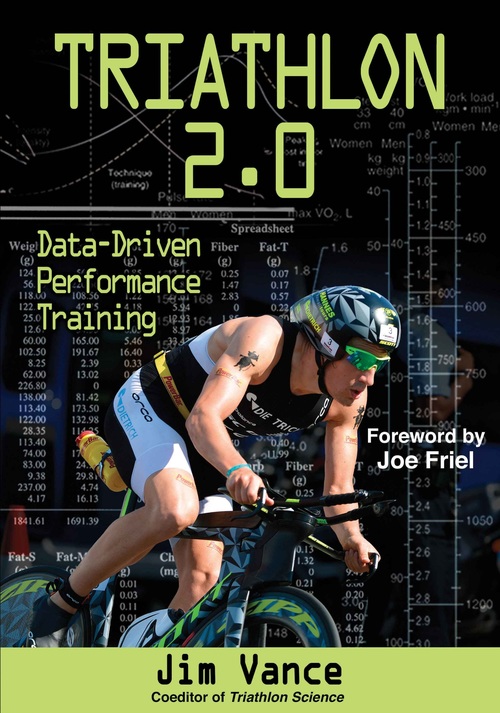
Library of Congress Cataloging-in-Publication Data
Names: Vance, Jim, 1976
Title: Triathlon 2.0 : data-driven performance training / Jim Vance.
Description: Champaign, IL : Human Kinetics, [2016] | Includes
bibliographical references and index.
Identifiers: LCCN 2015042251| ISBN 9781450460026 (print)
Subjects: LCSH: Triathlon--Training.
Classification: LCC GV1060.73 .V36 2016 | DDC 796.42/57--dc23 LC record available at http://lccn.loc.gov/2015042251
ISBN: 978-1-4504-6002-6 (print)
Copyright 2016 by James Vance
All rights reserved. Except for use in a review, the reproduction or utilization of this work in any form or by any electronic, mechanical, or other means, now known or hereafter invented, including xerography, photocopying, and recording, and in any information storage and retrieval system, is forbidden without the written permission of the publisher.
This publication is written and published to provide accurate and authoritative information relevant to the subject matter presented. It is published and sold with the understanding that the author and publisher are not engaged in rendering legal, medical, or other professional services by reason of their authorship or publication of this work. If medical or other expert assistance is required, the services of a competent professional person should be sought.
The web addresses cited in this text were current as of September 2015, unless otherwise noted.
Acquisitions Editor: Tom Heine
Developmental Editor: Kevin Matz
Managing Editor: Nicole ODell
Copyeditor: Mark Bast
Indexer: Bobbi Swanson
Permissions Manager: Martha Gullo
Graphic Designer: Denise Lowry
Cover Designer: Keith Blomberg
Photograph (cover): Arne Dedert/picture-alliance/dpa/AP Images
Photo Production Manager: Jason Allen
Art Manager: Kelly Hendren
Associate Art Manager: Alan L. Wilborn
Illustrations: Human Kinetics, unless otherwise noted
Printer: Versa Press
Human Kinetics books are available at special discounts for bulk purchase. Special editions or book excerpts can also be created to specification. For details, contact the Special Sales Manager at Human Kinetics.
Printed in the United States of America
10 9 8 7 6 5 4 3 2 1
The paper in this book is certified under a sustainable forestry program.
Human Kinetics
Website: www.HumanKinetics.com
United States: Human Kinetics
P.O. Box 5076
Champaign, IL 61825-5076
800-747-4457
e-mail: info@hkusa.com
Canada: Human Kinetics
475 Devonshire Road Unit 100
Windsor, ON N8Y 2L5
800-465-7301 (in Canada only)
e-mail: info@hkcanada.com
Europe: Human Kinetics
107 Bradford Road
Stanningley
Leeds LS28 6AT, United Kingdom
+44 (0) 113 255 5665
e-mail: hk@hkeurope.com
Australia: Human Kinetics
57A Price Avenue
Lower Mitcham, South Australia 5062
08 8372 0999
e-mail: info@hkaustralia.com
New Zealand: Human Kinetics
P.O. Box 80
Mitcham Shopping Centre, South Australia 5062
0800 222 062
e-mail: info@hknewzealand.com
E6013
Robin Sharma, best-selling author
Allan F. Mogensen
Ian Thorpe, five-time Olympic swimming gold medalist for Australia (on being in lane 5 for a final)
Joe Vigil, Olympic running coach
Benjamin Franklin
Tim OReilly, founder and CEO of OReilly Media, who popularized the terms open source and Web 2.0.
William Edwards Demming
Ralph Marston
Joe Friel, Olympic coach, best-selling endurance training author
Jack Daniels, from his book Daniels Running Formula
Joel Filliol, Olympic triathlon coach
Team slogan for Formula Endurance, the nations first USA Triathlon High Performance Team and USA Swimming team
Mike Tyson
Eddy Merckx, Belgian, five-time Tour de France champion
Margaret J. Wheatley, American writer and management consultant
Only three things can be measured in endurance training: frequency of workouts, duration of the workout, and intensity of the workout. Frequency is simple. All thats required is a calendar. Measuring duration is also easy. Any clock will do. Intensity is the hard one to measure. Ive been trying to do that accurately for about 50 years. This book reveals the current state of the art of intensity measurement in sport.
When I started training as a collegiate runner in the 1960s the most advanced technology available for measuring intensity was a stopwatch. And we didnt wear it on the wrist; it was handheld. Ive still got my silver Hanhart shockproof watch, scratched crystal and all, from when I was a high school track coach in the 1970s. By the early 1980s, when I was a triathlete, the heart rate monitor came along. I recall thinking there could be nothing more advanced than this; it was the ultimate measure of intensity. It took a couple of years to figure out zone-based training by sport. Once we had it, we were off to the races! That was the late 1980s.
In the early 1990s I heard about something called a power meter. I had no idea at first what it was all about, but somehow it measured intensity on the bike. Of course, there was no Internet, let alone search engines, so I had to wait for magazine articles on it. That seldom happened. But slowly I began to gather information. In 1995 I started writing a book called The Cyclists Training Bible and decided I should include something about power meters. So I wrote to SRM, the German company that was the only power meter manufacturer in the world. The owner, Uli Schoberer, was kind enough to loan me one for three months so I could become familiar with it. Its been 20 years since I first tried training with power meters, and the learning continues. What an amazing tool! And the list of high-tech tools for measuring intensity goes on and on. Just when I think weve reached the pinnacle, something new comes along. The problem it creates for us as athletes and coaches is deciding what is best for us and then learning how to use it.
Ive known Jim for many years and consider him one of the best triathlon coaches in the United States. I was his coach in the latter part of his career as a professional triathlete. When he retired and decided to become a coach, I was pleased because I knew he would be one of the best. Thats certainly proven to be right. His greatest strength as a coach has always been his understanding of producing the best possible race performances from the athletes with whom he worked. And that is based on understanding how to measure whats important. He is one of the sports leaders in this regard.
By reading Triathlon 2.0: Data-Driven Performance Training, you will become much more capable of determining your priorities and how you can measure and analyze them. Your improved performance will reflect your newfound knowledge.
Joe Friel, cofounder, TrainingPeaks
This book wouldnt have come to fruition if not for the support of some amazing and wonderful people in my life. Thank you to my parents, Rhonda and Bob, for all their work in raising me, and the appreciation they helped me learn for all they taught me and did for me. Thanks to my wife, Orlanda, for her love and support through all the years. Thanks to my young sons, Alistair and Alden, who motivate me every time I look at them and see their beautiful smiles. Thanks to Adam Zucco, who has been a great friend and colleague in the coaching business. Thanks to Joe Friel, Greg Welch, Bob Seebohar, and Peter Reid for teaching me a lot through their coaching during my racing career. And thanks again to Joe, who has mentored me from athlete to coach to writer. Finally, thanks to Lydia Kaulapai, who introduced me to writing and showed me what a great tool it can be in life.
Next pageFont size:
Interval:
Bookmark:
Similar books «Triathlon 2.0: data-driven performance training»
Look at similar books to Triathlon 2.0: data-driven performance training. We have selected literature similar in name and meaning in the hope of providing readers with more options to find new, interesting, not yet read works.
Discussion, reviews of the book Triathlon 2.0: data-driven performance training and just readers' own opinions. Leave your comments, write what you think about the work, its meaning or the main characters. Specify what exactly you liked and what you didn't like, and why you think so.

